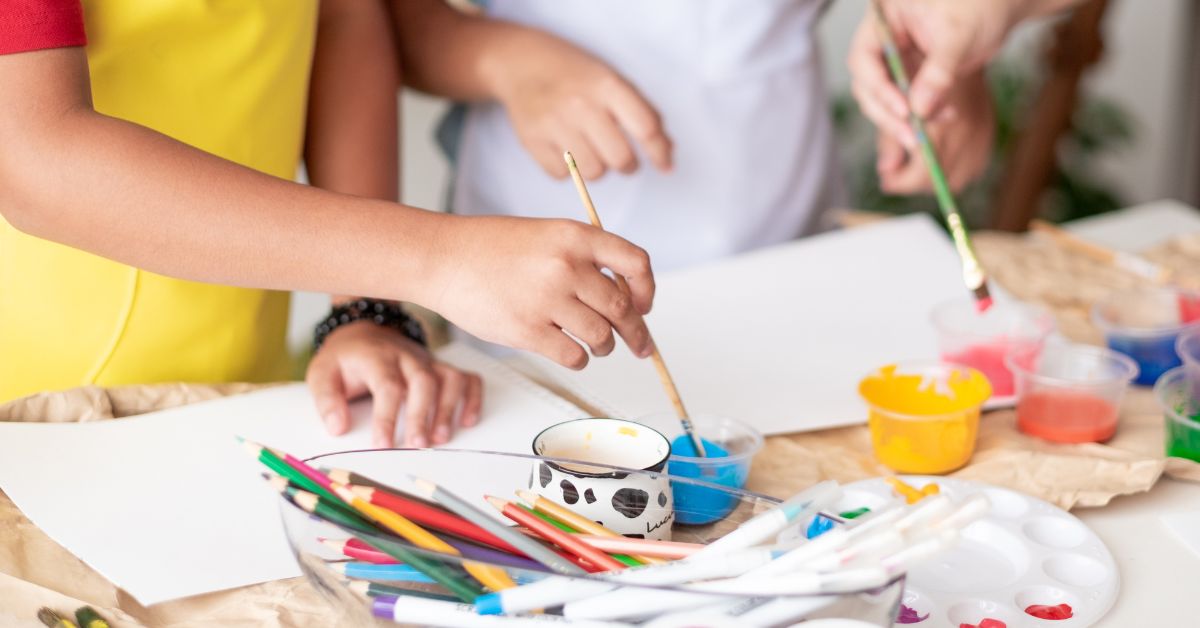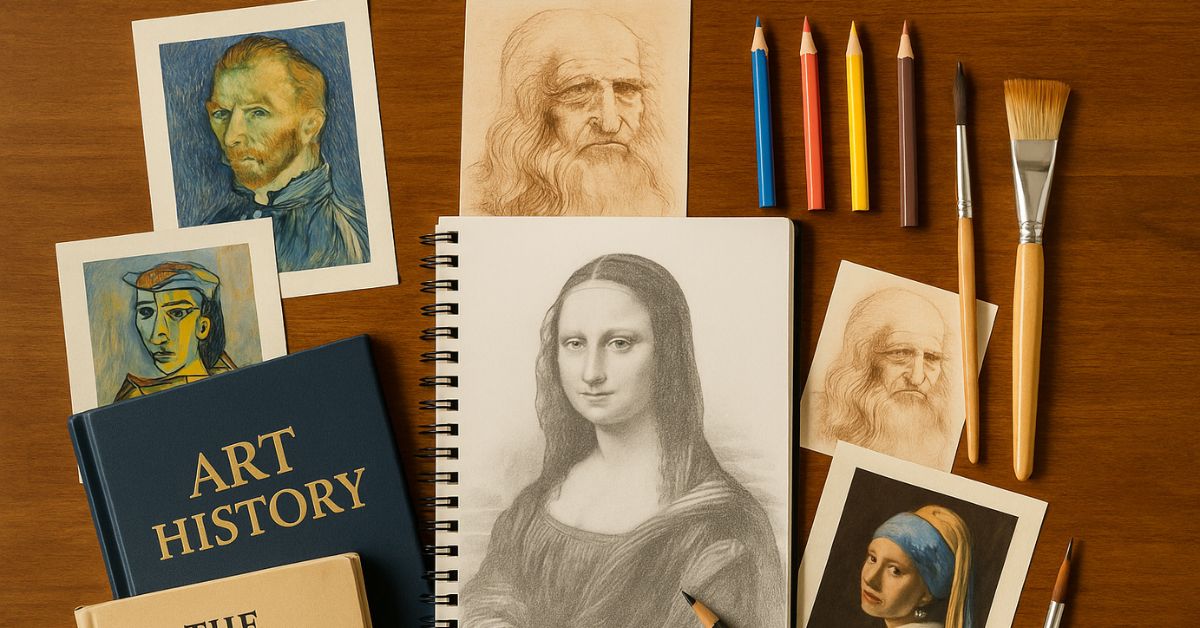When homeschooling a high school student, the art curriculum presents a unique opportunity to explore creativity while also teaching history, culture, and critical thinking. Focusing on studying famous artists can bring a fresh perspective, making art history both exciting and meaningful. This blog explores homeschool high school art ideas centered on the study of renowned artists, with actionable tips to create a well-rounded curriculum.
Whether you are an art enthusiast or new to the subject, these strategies can help craft a fulfilling art experience for your students.
Why Study Famous Artists In Your Homeschool Art Curriculum?
Studying the masters of art—like Da Vinci, Van Gogh, or Georgia O’Keeffe—provides more than just an appreciation of their work. It introduces students to different art movements, ignites creativity, and fosters critical thinking. But where do you start? Here are some compelling reasons to include famous artists in your homeschool high school art curriculum:
- Creative Inspiration
Exposure to a variety of styles and techniques encourages students to explore their own artistic voice. Students can follow exercises inspired by famous works, like replicating Picasso’s cubism and then creating their interpretations.
- Understanding History Through Art
Famous artists often reflect the values, struggles, and culture of their time. Examining works like Diego Rivera’s murals or Kara Walker’s silhouettes can spark discussions about history, politics, and society.
- Building Analytical Skills
Critiquing artwork builds observational and analytical skills. Students learn to think critically, understanding not just the “what” of an artwork, but also the “why” and “how.”
Structuring An Engaging High School Art Curriculum
Organizing an effective art curriculum for high school requires a plan that balances creativity and academic focus. Below are key steps to design a homeschool art course that incorporates studying the greats.
Determine Learning Objectives
Start by defining what you want your teen to achieve by the end of their art course. Objectives might include:
- Mastery of basic art techniques (drawing, painting, sculpture)
- Familiarity with various art periods like Renaissance, Impressionism, or Modernism
- An understanding of how societal context influences artistic expression
- The ability to create original works inspired by famous artists
Create a Flexible Art Schedule
Homeschooling allows for a level of flexibility that traditional classrooms can’t provide. To make the most of this, structure your art schedule to include a variety of activities.
- Artist Spotlight Days
Dedicate specific days to studying one famous artist. Focus on understanding their techniques, reviewing their work, and creating art inspired by their style.
- Museum or Virtual Museum Days
If you can, visit local art museums or online collections for deeper exposure. The Smithsonian’s online galleries and Google Art & Culture are excellent free resources.
- Independent Art Practice
Encourage your student to apply learned techniques in their unique projects, whether it’s replicating Van Gogh’s Starry Night or exploring abstract art like Kandinsky.
Mix Hands-On Projects With Academic Study
Not every day has to be about producing art. Incorporate art history readings, video tours, and discussions. Set assignments such as analyzing the use of color in a Monet painting or identifying symbolism in works by Frida Kahlo. Limit academic tasks to a few times a week to strike a balance with creative hands-on projects.
Use Milestone Projects to Track Progress
One idea is to create milestone assignments where students recreate a masterpiece or design an art project based on a specific period or movement. This could culminate in an “art show” where the student presents their work, tying together the art techniques and historical influences they’ve studied.

Practical Tips For Studying Famous Artists At Home
Introducing students to famous artists can seem daunting, but breaking it into manageable steps makes it enjoyable and accessible. The following tips focus on creating a structured yet creative environment where teens can thrive artistically.
Start With “Art Movements” Instead of Individual Artists
Instead of beginning with a single artist, introduce broader art movements first. For example, explore the Impressionist period before narrowing down to Monet or Degas. This helps students contextualize an artist’s work within the larger framework of evolving styles and societal influences.
Incorporate Multimedia Learning
Here’s how to make art history come alive with modern resources:
- Videos and Documentaries
Platforms like YouTube and PBS offer excellent free resources on artist biographies and movements. Consider assigning a documentary viewing as homework.
- Podcasts or Online Courses
Educational podcasts on art history offer great insight into an artist’s background, influences, and lesser-known works.
- Digital Tools for Art Practice
Give students access to digital drawing applications like Procreate or Adobe Fresco so they can experiment with recreating famous works using modern tools.
Tie Artists to Other Subjects
- History
Delve into how history shaped the works of artists like Francisco Goya during the Napoleonic Wars or Jacob Lawrence during the civil rights movement.
- Math/Geometry
Explore the geometric precision in styles like the Renaissance, where artists incorporated the Golden Ratio into their designs.
Focusing on interdisciplinary connections reinforces learning and broadens students’ understanding of art in a real-world context.
Teaching Art Appreciation Without Formal Training
Many homeschooling parents worry about teaching art because they lack formal artistic training. The good news is, you don’t have to be an expert to guide your teen in exploring art.
Focus on developing an appreciation for individuality in creative expression. Start by asking open-ended questions like, “How does this painting make you feel?” or, “What do you notice about how the artist uses light and shadow?” This type of questioning veers away from technical critique and opens the door to deeper exploration.
Additionally, encourage leveraging community resources.
- Collaborate With Local Artists or Teachers
Reach out to independent artists offering workshops. These sessions can enrich your student’s technical skills in painting, drawing, or digital mediums.
- Consider Online Art Classes
Platforms such as Skillshare or Udemy host accessible art tutorials, suitable for various age groups. Some even specialize in teaching homeschool students.
- Join Homeschool Groups
Many parents build art clubs or collaborations where families work together on portfolio projects or major art exhibitions.
How To Evaluate Your Student’s Progress In Art
Unlike subjects with clear right and wrong answers, art can feel more subjective when it comes to evaluation. However, you can measure progress through a mix of qualitative assessments and personal reflections.
Review Technical Growth
Focus on measurable skills such as their ability to replicate shapes, their use of proportion, and their application of shading or perspective over time. Compare their earliest sketches with their latest work to showcase tangible improvement.
Assess Engagement and Effort
Art isn’t always about producing perfect results. Does your student enjoy exploring various mediums? Are they curious about learning more? A consistent level of enthusiasm often reflects an effective curriculum.
Encourage Self-Reflection
Ask students to reflect on what they’ve learned from their studies so far. Have them keep an “art journal” to document their observations about different artists, as well as notes about their own progress or ideas for future projects.
By focusing on these areas, you’re not only guiding students toward artistic mastery but also building their confidence in expressing themselves through art.
High school is the perfect time to introduce your homeschool students to the world of famous artists. It’s more than just a study of techniques; it’s an exploration of culture, history, and creativity. By integrating structured lessons, hands-on activities, and flexible learning materials, you can craft a personalized art curriculum that inspires your teen to explore their unique artistic voice.





